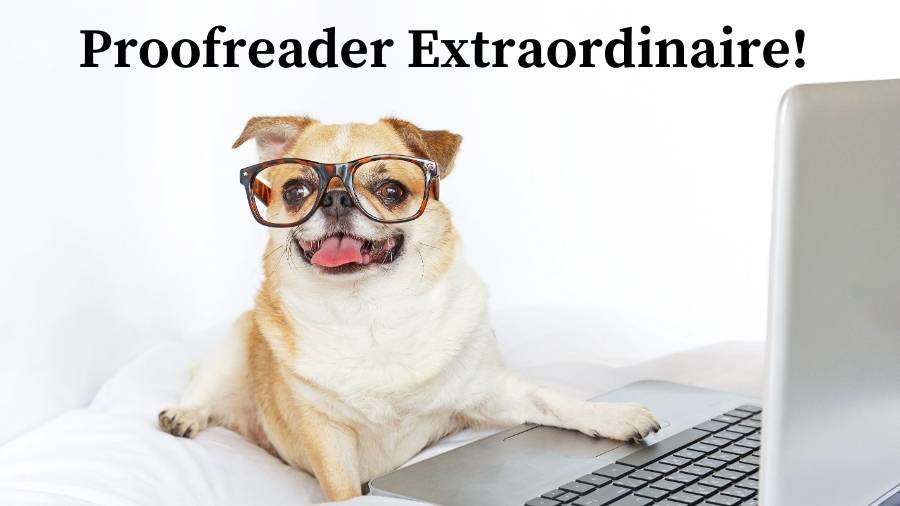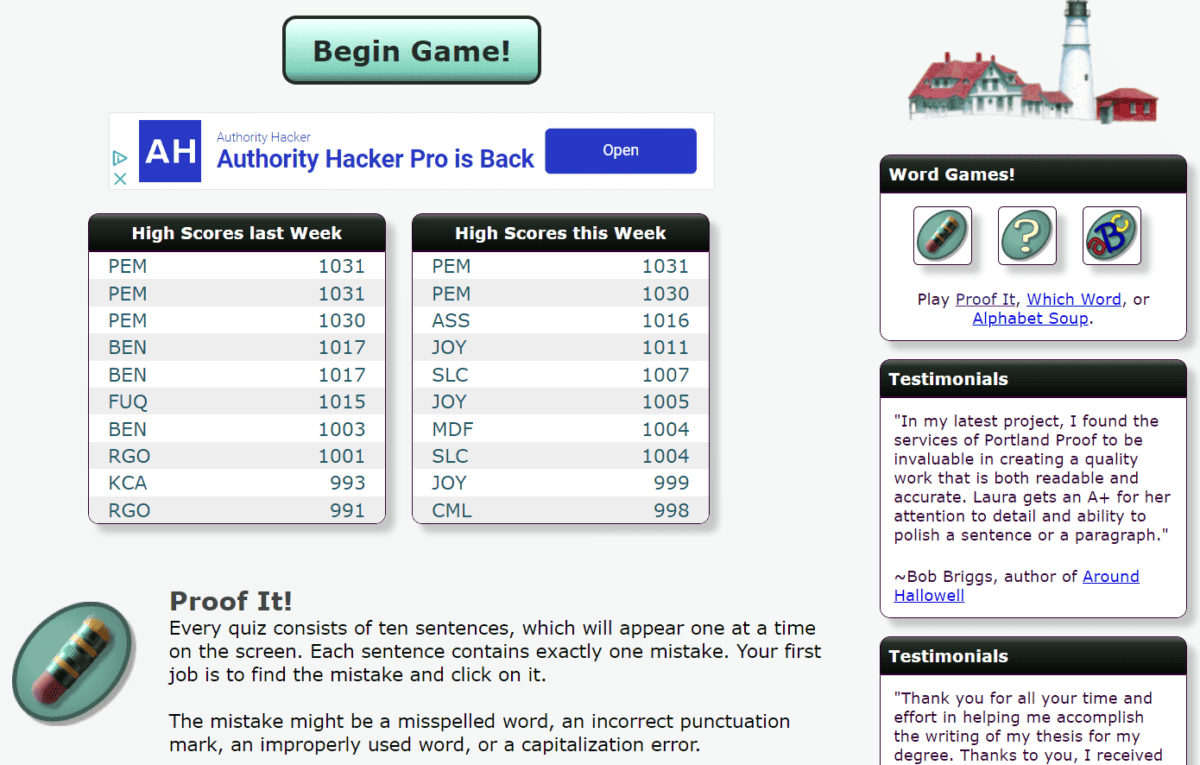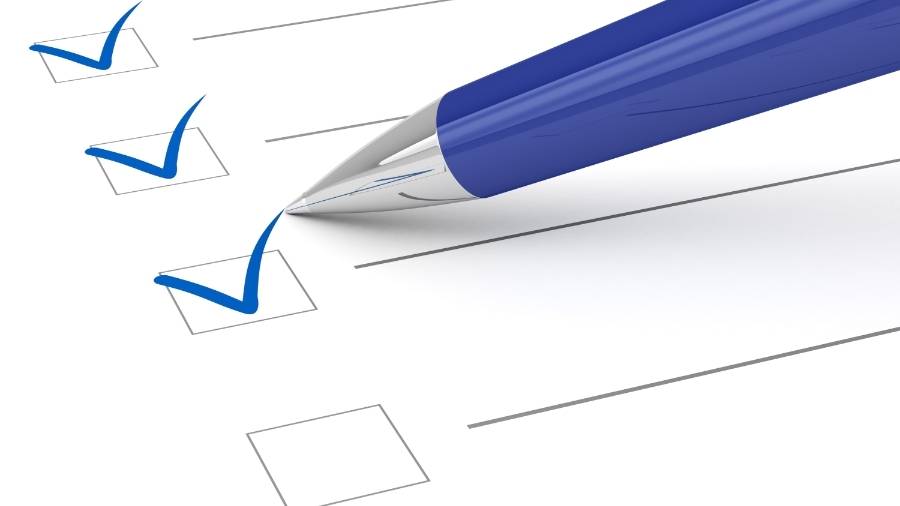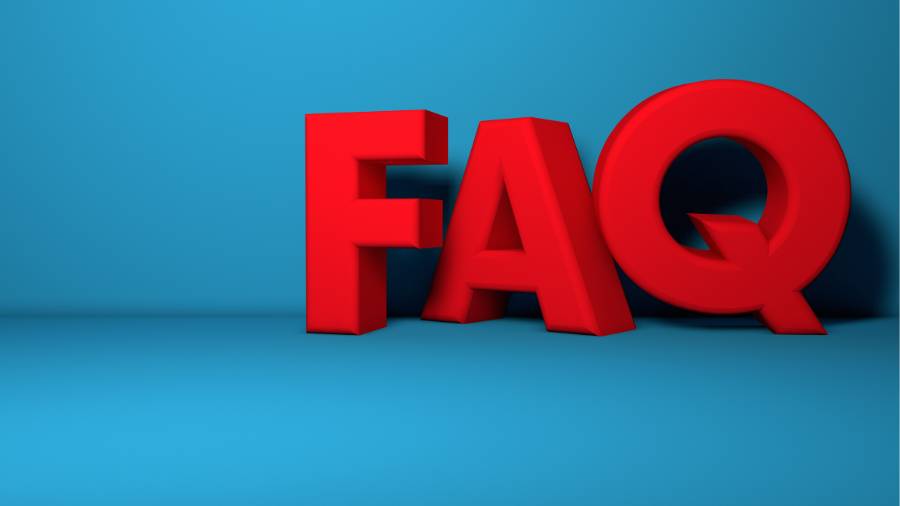This article may contain affiliate links. Please see our affiliate disclaimer in the footer menu for more information. Thank you for your support!

If you’d like to become a better proofreader in the short run, it’s relatively straightforward. My article about proofreading strategies provides practical tips to help you polish your prose pronto.
But how can you hone your skills over the long run?
Let’s look at solid strategies to help you become a stronger proofreader.
How to Become a Better Proofreader
1) Use the Elevate app to improve your skills.
If you’re looking for a fun and engaging way to enhance your proofreading abilities, the Elevate app has you covered. I enjoy using Elevate to brush up on skills I’ve learned and expand my vocabulary.
The Elevate app is host to 40+ games that boost cognitive function.
Although it wasn’t designed to be an app to improve proofreading skills, it has 17 games that do just that! The applicable games are divided into three categories: writing, reading, and speaking.
I’m such a fan of using Elevate to boost my proofreading proficiency that I’ve dedicated an entire article to this subject: “Why the Elevate App Serves as the Perfect Proofreading Game.” If you’re wondering if you’ll need to fork over some cash to take advantage of this app, the answer is no. Elevate offers a free version and a paid version.
The free version allows you to play three games per day, and it can be downloaded on Apple and Android devices. With the paid version, you always have access to all the games in the app.
2) Take online proofreading tests.
Another fun way to learn to proofread more effectively is to see what you’ve mastered and find opportunities for improvement by taking online tests.
However, so many proofreading assessments are available online.
How are you going to know which ones are worth your time?
Fear not! I’ve compiled a list of some of the best online tests and quizzes: “Top-Tier Proofreading Tests and Quizzes.” While doing research for this article, I was surprised by the abundance of assessments that offer excellent practice.
I get a kick out of taking tests like these, and I hope you do too!
3) Check out the game Proof It!

Proof It! is mentioned in the article I referred to above. It’s an engaging game made up of ten-sentence quizzes.
Each sentence in the quiz has only one error. Your job as the proofreader (or the “detective,” as I like to think about it) is to find the mistake as quickly as possible and type the correction into the text box provided.
The website lists the highest scores of the people who played the game during the current and previous weeks.
You can see how you stack up against other detectives out there. 😉
I think this game is well designed and worth taking a crack at!
Please click here to go to Proof It!
4) Make use of The Blue Book of Grammar and Punctuation.
This is one other suggestion from the article I mentioned previously that I don’t want you to miss. The Blue Book of Grammar and Punctuation, written by Jane Straus, is a popular resource chock full of well-explained grammar and punctuation rules and practice quizzes.
I have this book, and it’s been a terrific source of knowledge and practice for me.
Repetition is essential for mastering proofreading concepts.
If you don’t want to own a hard copy—no worries. Grammarbook.com is a website based on this superb book. If you purchase the book, you can access more in-depth practice.
Like the book, the website teaches grammar, punctuation, and usage rules. It’s also home to 52 quizzes and 4 tests to ensure you understand the rules presented on the site. I highly recommend it!
And if you want to learn about other helpful websites, I wrote an article about the best sites for grammar practice.
5) Subscribe to Grammar Girl’s podcast.

Have you ever heard of Grammar Girl? If you’re a word nerd like me, there’s a good chance you have. Mignon Fogarty (aka Grammar Girl) is the woman behind this fun and informative podcast. She answers questions regarding all aspects of the English language.
You can listen to her podcast on Spotify.
Originally released in 2006 and still going strong, Grammar Girl has enough archived podcasts to keep you entertained for a long time.
In the Podcast Awards, she’s won the award in the education category five times.
If you’re an auditory learner, this is right up your alley! Tune in and enjoy!
6) Become a member of an online group for proofreaders.
Participating in online proofreading groups is an excellent way to expand your knowledge. Members of these groups are usually people who already work in the industry.
Facebook and LinkedIn are two sites that have groups you can join.
Some groups include both proofreaders and editors. The more the merrier!
Don’t be afraid to ask questions in these groups!
I’ve found that group members are quite willing to share their wisdom and assist those new to proofreading.
Also, it’s always nice to belong to a group where members share your interests.
Freelancing can sometimes be lonely; these groups can enrich your knowledge and give you a sense of community.
Belonging to a group means you can get various perspectives on how to handle a particular struggle.
For example, receiving help to overcome comma confusion or a hyphen hiccup is greatly appreciated. If you’re a proofreader, I know you know exactly what I’m talking about!
You’ll discover a treasure trove of information in these groups by using the search function.
7) Check out forums with relevant conversations.
Forums with discussions about proofreading are ideal places to learn more about grammar, punctuation, and other aspects of the English language.
The people who post on these forums are often well-versed in the mechanics of English and provide helpful and insightful answers to those who have asked questions.
It’s so convenient to search a forum for a specific question and have the answer pop up immediately.
Two of the best forums for finding proofreading threads are Quora and Reddit.
And here’s the link to my Quora profile if you’d like to see questions that have been answered by yours truly. 😉 I’ve provided over one hundred answers on Quora, most of which pertain to the following topics:
- proofreading
- English
- grammar
- punctuation
- spelling
- Grammarly
Now let’s see how you can increase your proofreading prowess by assisting others.
8) Help new proofreaders and people learning English.

Helping others boosts our self-esteem and makes us happy! Online groups and forums (including Reddit and Quora) are great spaces to share what you know.
Study after study has shown that teaching others effectively enhances our learning. Having to retrieve what you’ve learned and then explain it to someone else helps you internalize that information and hold onto it for a longer time.
Even if you’re new to proofreading, you can probably offer support in these groups.
People who speak English as a second language often look online for assistance.
If you’re a native English speaker, you’ll find that helping them learn English will empower you to have a more robust command of your language.
9) Read Painless Grammar to become a better proofreader.
Rebecca Elliott, PhD, wrote Painless Grammar with middle and high schoolers in mind. Although I was well beyond my high school years when I bought this book, it was a great find.
I read it to remember all those grammar and punctuation rules I had learned in middle and high school but had long since forgotten.
I wanted to regain my previous command of English before delving into The Chicago Manual of Style (CMOS), the style guide I’d be learning to use in the proofreading course I was preparing to take.
Although Painless Grammar doesn’t strictly follow CMOS with every detail, it comes reasonably close. I recommend reading it not to learn about any particular style but to enjoy relearning the basics.
Elliott has a great sense of humor, and the book teaches you not only about grammar but also about punctuation and commonly misused words. If you’re not a grammar fan, this book truly makes it as painless as possible!
10) Take an online proofreading course.

One of the best ways to become a better proofreader is to take a proofreading course, of course! If you’re interested in becoming a professional proofreader, I wrote an article containing several recommendations for comprehensive proofreading programs.
If you’re interested in sharpening your skills but not taking up proofreading as a side hustle or day job, I recommend checking out courses on Udemy.
Udemy has courses for proofreading, grammar, and punctuation.
You can sort the classes according to your level: beginner, intermediate, or expert.
Finally, the courses are reasonably priced and rated by former students.
If grammar is what you struggle with most, I highly recommend a course I took called Grammar Lion: A Grammar Refresher. I penned an in-depth post about this grammar refresher if you’d like to learn more about it.
11) Get a copy of The Best Punctuation Book, Period.
If you’re serious about proofreading, The Best Punctuation Book, Period should be in your repertoire.
The author, June Casagrande, has a knack for explaining punctuation rules in a way that’s easy to understand. She also gives excellent examples that help drive her points home.
One aspect of this book I especially appreciate is that it fills in some gray areas of CMOS.
Casagrande even gathered a Punctuation Panel of experts to give their opinions on specific punctuation matters.
The highlight of this book is the presentation of punctuation rules and corresponding examples according to all four major style guides:
- The Chicago Manual of Style
- The Associated Press Stylebook
- the MLA (Modern Language Association) Handbook
- the Publication Manual of the American Psychological Association
Finally, the book includes a section called “Punctuation A to Z.” It’s an überhelpful guide that shows you how to hyphenate, punctuate, and capitalize an abundance of terms based on the four major guides.
I take this book with me whenever I proofread outside my home, and I’ve used it so much that the front and back covers are tattered.
Om Proofreading has an article about how to elevate your punctuation proficiency if you need advice on the best ways to brush up on the basics.
12) Have your proofreading notebook on hand for each job.

I also have my proofreading notebook with me whenever I work. This notebook is one of my most valuable resources because I made it. According to the generation effect, it’s easier to remember information we’ve produced (generated) than information we’re given.
I’ve taken notes on the grammar and punctuation points that give me the most trouble and written down example sentences to illustrate these points.
I’ve jotted down useful information from the course I took and books I’ve read.
Finally, I’ve noted other tidbits of knowledge I’ve gleaned from previous proofreading projects.
One of the pages I refer to most is my list of conjunctive adverbs, which is beneficial when it comes to punctuation. I also reference my cheat sheet on lay vs. lie from time to time. Sh, don’t tell anyone! 😉
13) Subscribe to Grammar Planet—a great resource!
Grammar Planet is an excellent resource for learning about grammar, punctuation, and usage. You need to pass a total of 53 units to complete the program.
The regular subscription price is $39, and the subscription lasts for however long it takes you to work through the program (even if it takes over a year).
In each unit, you’ll find printable notes and a brief video. The videos are interspersed with one-question quizzes to ensure you understand the talking points. You then get the practice you need before taking the test at the end of the unit.
After passing the test, you can move on to the next unit. The course moves according to your ability.
Extra practice is given to students when they struggle to understand a particular concept.
You can take the test at the end of each unit as many times as you wish.
The first 9 units have you label parts of speech, and by Unit 10, you learn about diagramming sentences. Some people love to diagram sentences, but most people loathe it!
Nevertheless, knowing how to correctly diagram sentences will help you immensely with your punctuation skills.
The first 12 units alone gave me a much tighter grasp of grammar!
14) Take good notes in a hard copy of CMOS.

At first, I felt somewhat uncomfortable marking up a book that proofreaders, editors, and writers revere. But I soon got over it in the name of improvement.
I think I’ve taken the practice of writing notes in the margins to a new level with all my scribbles. However, I find this to be incredibly beneficial.
I’ve used a highlighter and black, blue, and red ink to personalize my copy of CMOS.
Sometimes I’ve highlighted tricky rules or jotted down notes about the most important part of a rule. Other times I’ve noted the specific place in my proofreading notebook where I can find additional info about a certain topic.
I’ve even written out the definitions of various grammar terms, which helped me process the information I was learning.
Furthermore, I love to use mnemonic devices whenever they’re applicable.
For example, I wrote the acronym FANBOYS to help me remember the seven coordinating conjunctions: for, and, nor, but, or, yet, and so.
Finally, I’ve made it a point to dog-ear pages I refer to frequently, and I’ve used little red sticky flags to mark each section for easy access.
Using sticky flags for fast access helps me be a more efficient proofreader. I authored an article about other time-saving proofreading tactics if you’re interested.
15) Make a checklist of the errors you need to look for.

A checklist will remind you of the errors to search for while you’re on error patrol. 😉
When I started proofreading for clients, I worried about not checking their writing for every mistake under the sun. My checklist of mistakes served as a safety blanket until I became so familiar with it that I didn’t need it anymore.
Note: Professional proofreaders tend to put a lot of pressure on themselves. Perhaps we do this because we know we’re the last line of defense for errors before a work is published. But even though we’re perfectionists, we need to remember that proofreaders occasionally make mistakes.
By making your own checklist, the generation effect (mentioned in tip #12) comes into play again.
Did you ever take a test in high school where the teacher let you have one three-by-five-inch index card full of notes?
Your teacher likely used this strategy because they knew that having you write the information in your own words would lead to deeper processing and enhanced learning. This abstract from a study published in Psychological Science shows that your teacher’s tactic was well founded.
When crafting my checklist, I included specific errors from all the following categories:
- grammar
- capitalization
- punctuation
- spelling
- formatting
- incorrect word choices
- repeated or omitted words
And don’t forget to include checking for errors with numbers and abbreviations.
Om Proofreading has an article that serves as a checklist for basic elements to look for while proofreading. Feel free to check it out if you think it would be beneficial.
Frequently Asked Questions

How do I become a proofreader with no experience?
First, I recommend understanding the proofreading skills needed for this line of work Next, you’ll want to take a reputable and thorough proofreading course to learn those skills. Finally, you can consider picking a niche to cater to a target market.
If you’d like more info, I published a post that provides a comprehensive guide to starting as a proofreader from scratch.
Can you really make a living proofreading?
Yes, you can really make a living proofreading. According to the Bureau of Labor Statistics, proofreaders earn an average hourly wage of $24.57, which is $51,100 yearly. If you work as an employee at a company, you can make a starting salary right away.
However, if you become a freelance proofreader, you’ll need to build up a solid base of clients, which can take a long time. You can also expect fluctuations in your earnings, which is typical of most freelance work.
While some people work as full-time proofreaders, others choose to make proofreading their side hustle.
What qualifications do you need to be a proofreader?
Fortunately, you don’t need a degree or certification to become a proofreader. Instead, you need the proper skill set to succeed. Proofreaders need a firm grasp of English grammar and mechanics. However, they also need to know about style guides, software, preserving the author’s voice, and more.
If you’d like to learn more, I’ve crafted an informative article about proofreader qualifications. It includes two tips for freelancers to prove to clients that they have the know-how to polish prose professionally.
I hope this article has given you actionable ideas about how to become a better proofreader.
Best wishes to you!
“Encourage yourself, believe in yourself, and love yourself. Never doubt who you are.”
– Stephanie Lahart

Recent Posts
Punctuation is important because it enables us to communicate our message clearly and effectively. Without punctuation, we wouldn’t understand how units of a sentence relate to one another or how...
Although you're probably somewhat familiar with adverbs, you may be unaware of sentence adverbs. As a trained proofreader who has studied the parts of speech, I can help you understand this unique...
